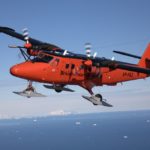Orographic Flows and the Climate of the Antarctic Peninsula (OFCAP)
Orographic Flows and the Climate of the Antarctic Peninsula (OFCAP)
- Start date
- 1 October, 2009
- End date
- 30 September, 2012
OFCAP is an integrated programme of field observations, analysis and modelling aimed at understanding how the westerly winds in the Antarctic Peninsula interact with the mountains and influence the climate on the ice shelves on the eastern side of the Peninsula. A one month field campaign in early 2011 will use the instrumented meteorological Twin Otter aircraft, four automated weather stations across the Peninsula at 67 degrees south, weather balloon ascents on both sides of the Peninsula and energy flux measurements on the Larsen ice shelf. High-resolution atmospheric model simulations will be used together with the observations to give a broader picture. We expect to gain new insight into the links between atmospheric flow, orography and surface climate of the region to contribute to improved performance of numerical weather prediction and climate models in the region and mountainous areas in general. Using predicted large scale atmospheric flow changes in the region predicted in the 4th Assessment Report of the Intergovernmental Panel on Climate Change we can develop future climate scenarios for the region.
OFCAP is an integrated programme of field observations, analysis and modelling aimed at understanding how the westerly winds in the Antarctic Peninsula interact with the mountains and influence the climate on the ice shelves on the eastern side of the Peninsula. A one month field campaign in early 2011 will use the instrumented meteorological Twin Otter aircraft, four automated weather stations across the Peninsula at 67 degrees south, weather balloon ascents on both sides of the Peninsula and energy flux measurements on the Larsen ice shelf. High-resolution atmospheric model simulations will be used together with the observations to give a broader picture. We expect to gain new insight into the links between atmospheric flow, orography and surface climate of the region to contribute to improved performance of numerical weather prediction and climate models in the region and mountainous areas in general. Using predicted large scale atmospheric flow changes in the region predicted in the 4th Assessment Report of the Intergovernmental Panel on Climate Change we can develop future climate scenarios for the region.
